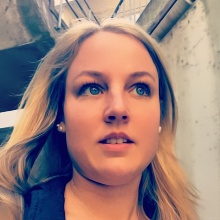Contact
Pfaffenwaldring 61
70569 Stuttgart
Deutschland
Subject
Modelling hydrodynamic dispersion under two-phase flow conditions
Katharina Heck (University of Stuttgart)
Rainer Helmig (University of Stuttgart)
Vahid Joekar-Niasar (University of Manchester)
Kilian Weishaupt (University of Stuttgart)
1st April 2018 to 30th September 2018
Dispersion in porous media, controlled by advection and diffusion, has been intensively studied in hydrogeology where usually only one fluid phase exists. However, the characterization of transport under single-phase conditions is not valid when an extra fluid phase exists. Although the majority of the literature deals with transport under saturated conditions, in several experimental studies dispersivity was investigated under unsaturated (two-phase) flow conditions. The functional form of the dependency of dispersion on saturation, if any, has not yet been established. Against this backdrop, new models have been developed to define and establish a relationship between dispersive flux and concentration gradient for a not fully developed Fickian regime. One of such models is the mobile-immobile model (MIM). In MIM, a clear distinction between two regions, i.e. flow contributing (mobile) region and stagnant (immobile) region, is made. The solute transfer between these two regions is modelled by a diffusive exchange rate.
In the provided theories for transport and mixing under two-phase conditions, two-phase flow behaviour has not been taken into account.
This Master Thesis aims at examining this new theory by comparing numerical results based on two different modelling scenarios. For a better comparison and to verify the models experiments will be done in collaboration with Dr. Vahid J. Niasar from the University of Manchester.
The main tasks of the thesis will be:
- Extend the available two-phase two- component model with a dispersion model based on MIM in DuMuX
- Inverse modelling of the experimental results gained in Manchester using the new modification of the MIM theory to get Dm, um, α
- Inverse modelling of the experimental results using the original MIM to get Dm,um,α,β
- Analyse the two model approaches based on the experiments and evaluate the predictive capacity of the new modification of the MIM theory in comparison to the original approach
The Master student is expected to implement the necessary code in DuMuX. The Master Thesis shall be summarized in a report and presented in an oral presentation.


